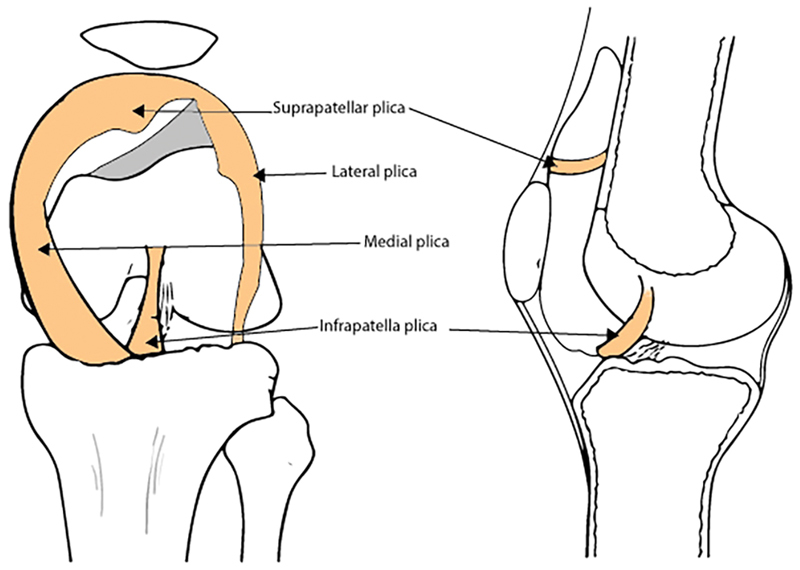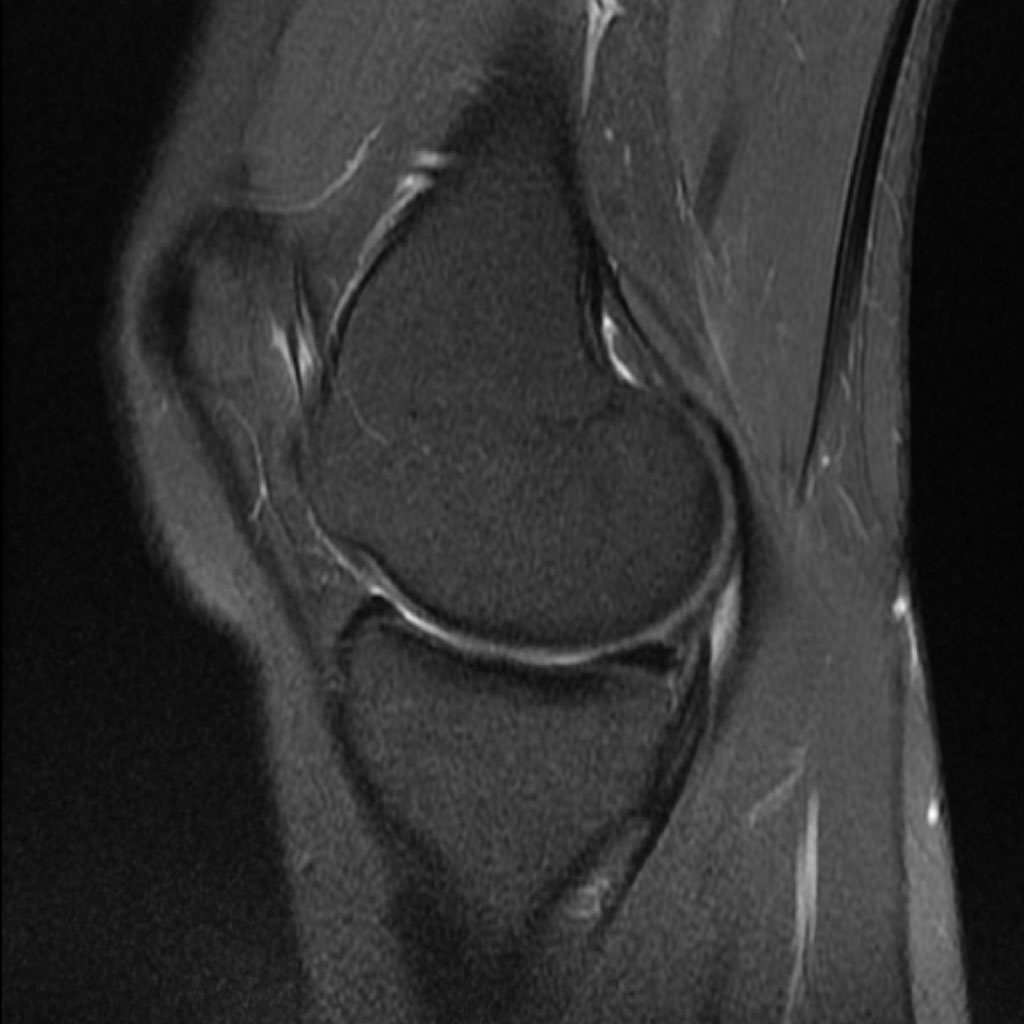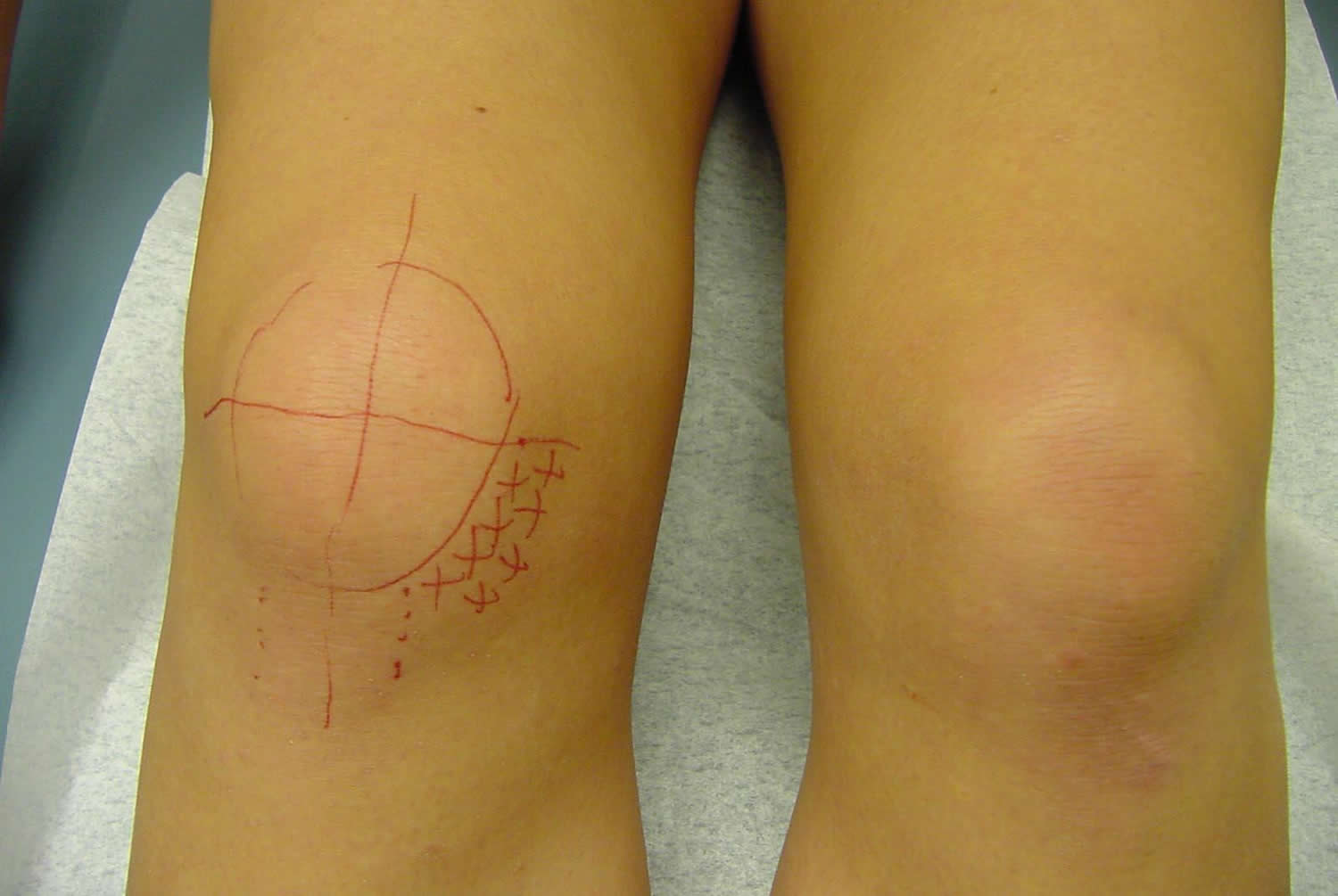
Synovial Plicae of the Knee Radsource
Plica syndrome, sometimes called "synovial plica syndrome," is a condition of irritation of the tissue that is the inner lining of the knee joint. Synovium is the type of tissue that forms the lining of a joint. The synovial tissue contains the joint space and helps to make the normal fluid that lubricates the joint. The synovial plica are.

Plica Syndrome WikiMSK
achy, rather than sharp or shooting. worse when using stairs, squatting, or bending. Additional symptoms of plica syndrome include: a catching or locking sensation in your knee when getting up.

Synovial Plicae of the Knee Radsource
The Sports Health Program at Nicklaus Children's is one of the premier sports health programs in the nation, combining state-of-the-art diagnostics and screening with a multidisciplinary team of pediatric sports medicine specialists for athletes. Plica syndrome is a condition that causes knee pain. It occurs when the plica, fold in the synovial.

Knee Plica Syndrome Exercises [P]rehab
Synovial plica syndrome (SPS) occurs in the knee, when an otherwise normal structure becomes a source of pain due to injury or overuse. Patients may present to general practitioners, physiotherapists, or surgeons with anterior knee pain with or without mechanical symptoms, and the diagnosis can some.

Image
Approach Considerations. The most common symptomatic plica is medial parapatellar plica. Surgical intervention for plica syndrome should be considered when symptoms have persisted and efforts at nonoperative management have failed for a period typically approaching 6 months. Permanent modification of athletic activity is usually another option.

Synovial Plicae of the Knee Radsource
Pathology. Knee plicae are synovial invaginations which are thought to be remnants of embryological development. Plicae ≥1 mm may be present in over 70% of individuals and are mostly asymptomatic 8,9 . Under certain circumstances, they carry the potential to become inflamed and symptomatic. The medial plica is the most common to be.

Synovial Plicae of the Knee Radsource
The plica normally diminish in size during the second trimester of fetal development, as the three compartments develop into the synovial capsule. In adults, they normally exist as sleeves of tissue called synovial folds. The plica are usually harmless and unobtrusive; plica syndrome only occurs when the synovial capsule becomes irritated.

Plica syndrome Signs, symptoms and treatment of this knee pain YouTube
Plica syndrome is a pathological condition secondary to inflammation. Plicae around the knee are common and generally asymptomatic. They often are misdiagnosed. The morphology of knee plicae varies; mediopatellar plicae are the most common cause of the plicae syndrome. An intermittent dull pain is t.

Synovial Plicae of the Knee Radsource
The diagnosis and treatment of plica syndrome of the knee is reviewed here. The causes and diagnostic approach to knee pain in the young athlete and adults are discussed separately: (See "Approach to acute knee pain and injury in children and skeletally immature adolescents" .) (See "Approach to chronic knee pain or injury in children or.

Medial plica syndrome, medial plica irritation, causes, symptoms, diagnosis & treatment
Plicae. Plica syndrome is defined as a painful impairment of knee function resulting from the thickened and inflamed synovial folds (usually medial). Diagnosis is made clinically with pain over the medial parapatellar region with possible palpation of a thickened cord. Treatment is mainly nonoperative with NSAIDs and physical therapy to focus.

Synovial Plicae of the Knee Radsource
Abstract. Synovial plica syndrome (SPS) occurs in the knee, when an otherwise normal structure becomes a source of pain due to injury or overuse. Patients may present to general practitioners, physiotherapists, or surgeons with anterior knee pain with or without mechanical symptoms, and the diagnosis can sometimes be difficult.

Anatomy and MR Imaging Appearances of Synovial Plicae of the Knee RadioGraphics
A plica is a band of thick, fibrotic tissue that extends from the synovial capsule of a joint. Plica can be present in multiple joints, but this article will review plica in the knee which is the joint most commonly affected by plica tissue. As a result of overuse or injury, plica can become inflamed or irritated due to friction across the patella or the medial femoral condyle. When the plica.

Synovial plicae around the knee The Knee
A synovial plica is a shelf-like membrane between the synovium of the patella and the tibiofemoral joint. Plicae essentially consist of mesenchymal tissue which is formed in the knee during the embryological phase of development. This tissue forms membranes which divide the knee into 3 compartments: the medial and lateral tibiofemoral compartments and the suprapatellar bursa.

Treat Plica Syndrome Knee Pain with Stretches & Exercises Ask Doctor Jo YouTube
Plica is a term used to describe a fold in the lining of the knee joint. Imagine the inner lining of the knee joint as nothing more than a sleeve of tissue. This sleeve of tissue is made up of synovial tissue, a thin, slippery material that lines all joints. Just as a tailor leaves extra folds of material at the back of sleeves on a shirt to.

Synovial Plicae of the Knee Radsource
Background. Plica syndrome of the knee is a constellation of signs and symptoms that occur secondary to injury or overuse. Plica is a Latin word meaning "fold." This term is simply a descriptive one; there is no empiric evidence that true folding of the synovial lining ever occurs. Synovial plicae are normal structures found in many knees.

Superior view of the knee joint with pathologic mediopatellar plica. As... Download Scientific
Plica syndrome is a condition caused by inflammation in the lining of the knee joint. It results in achy knee pain which gets worse with activity, particularly up and down stairs, a feeling of instability in the knee and sometimes a catching or locking sensation. Plicae are small folds in the synovial membrane, the thin structure that surrounds.